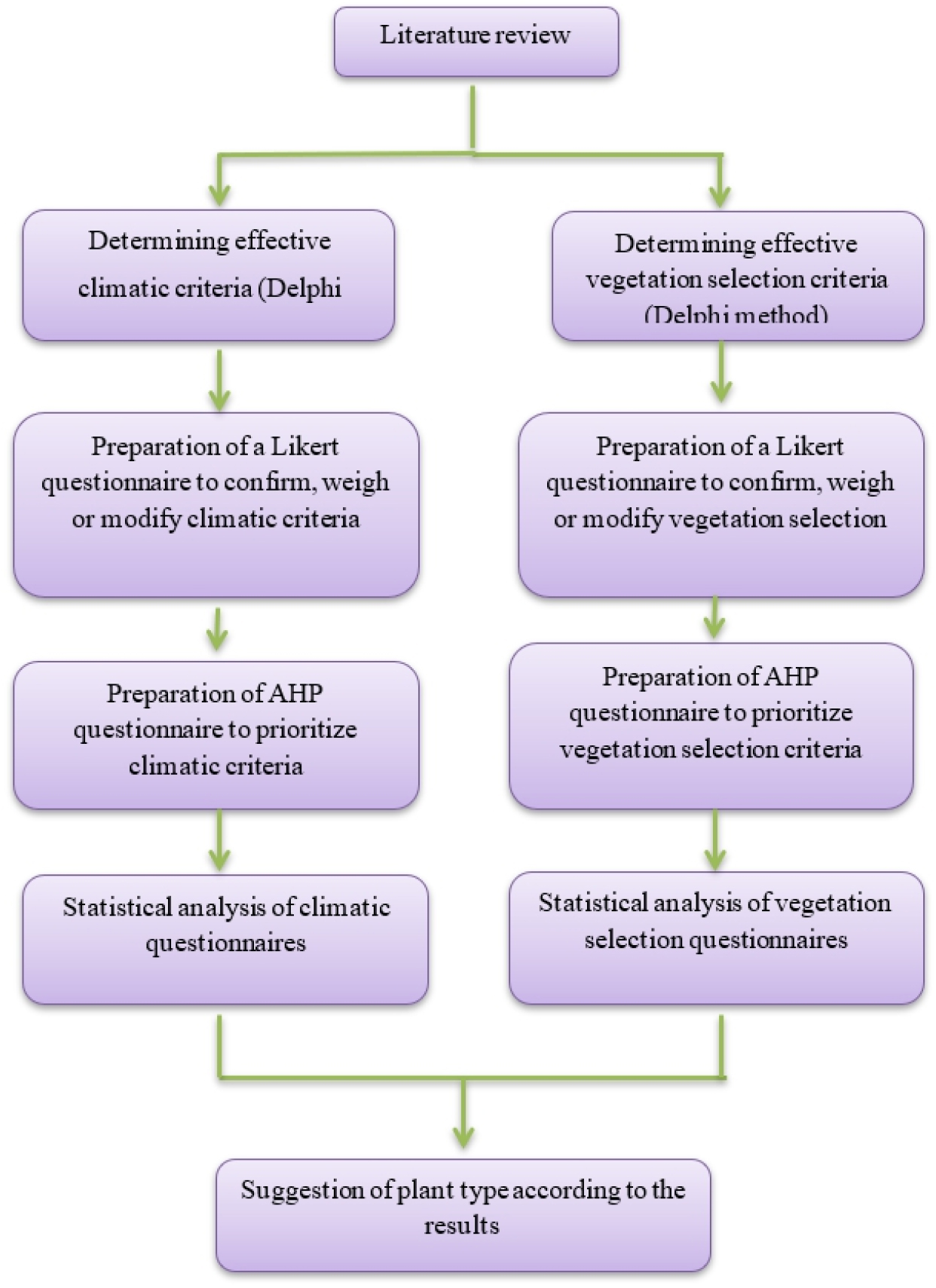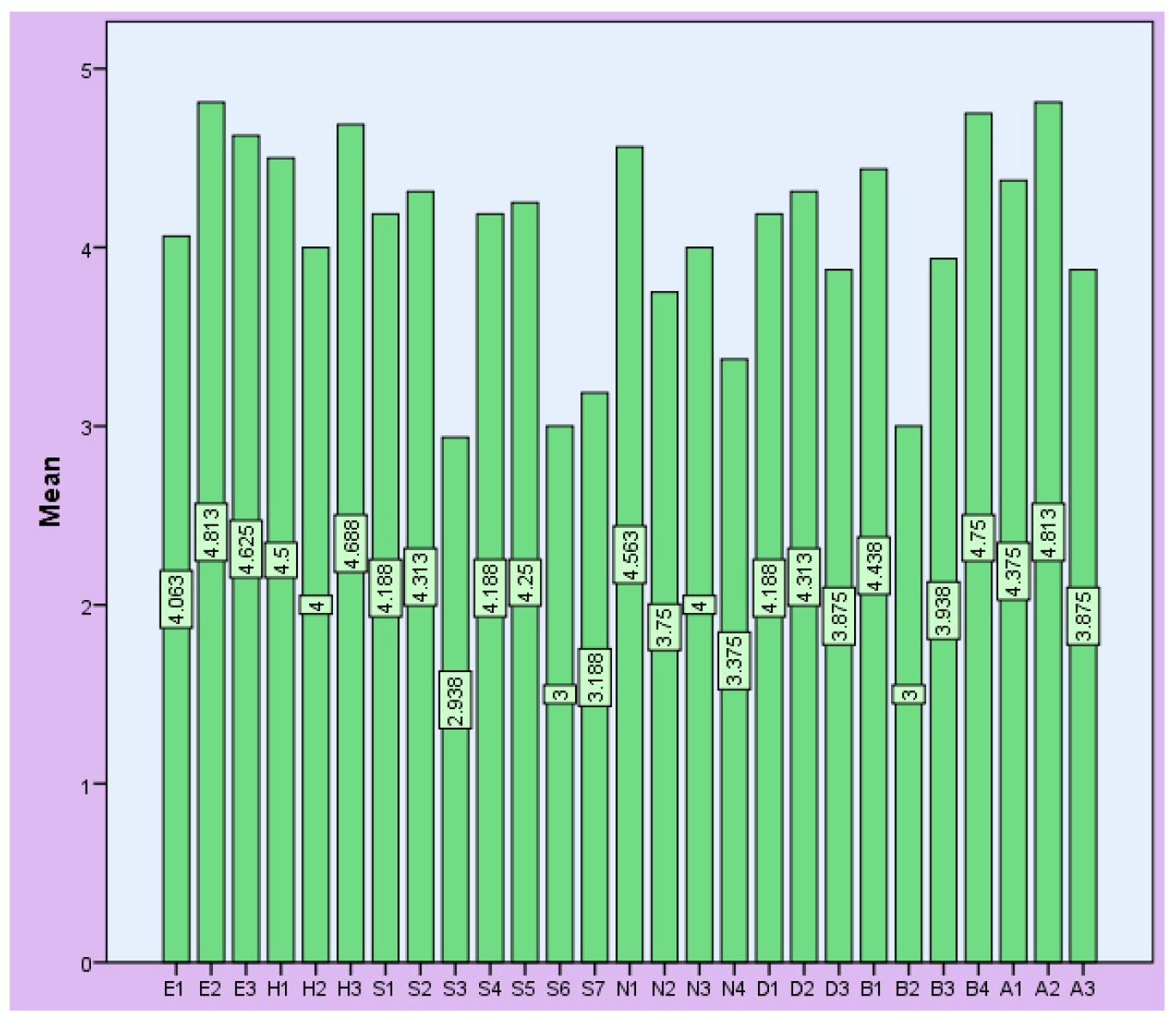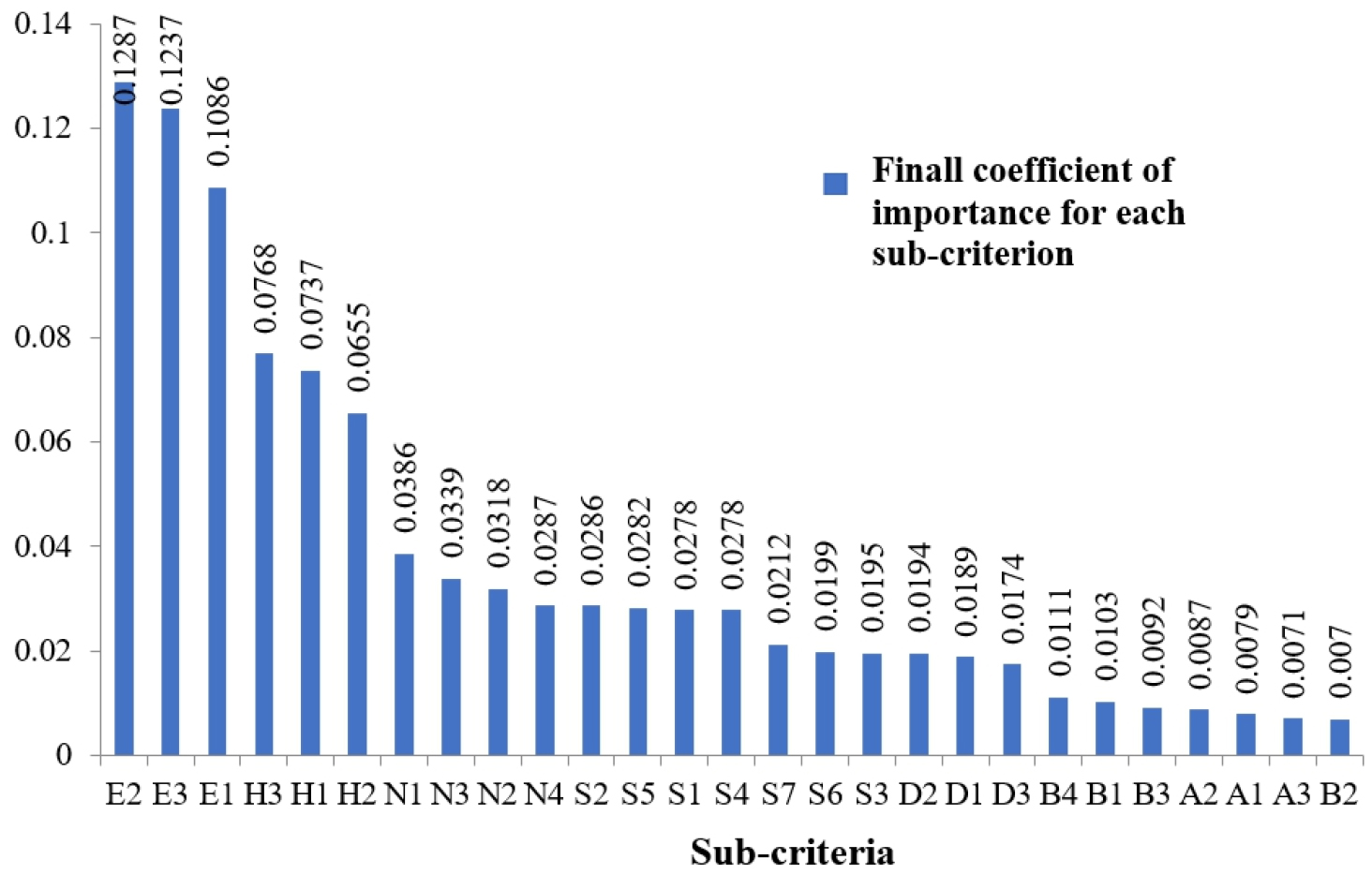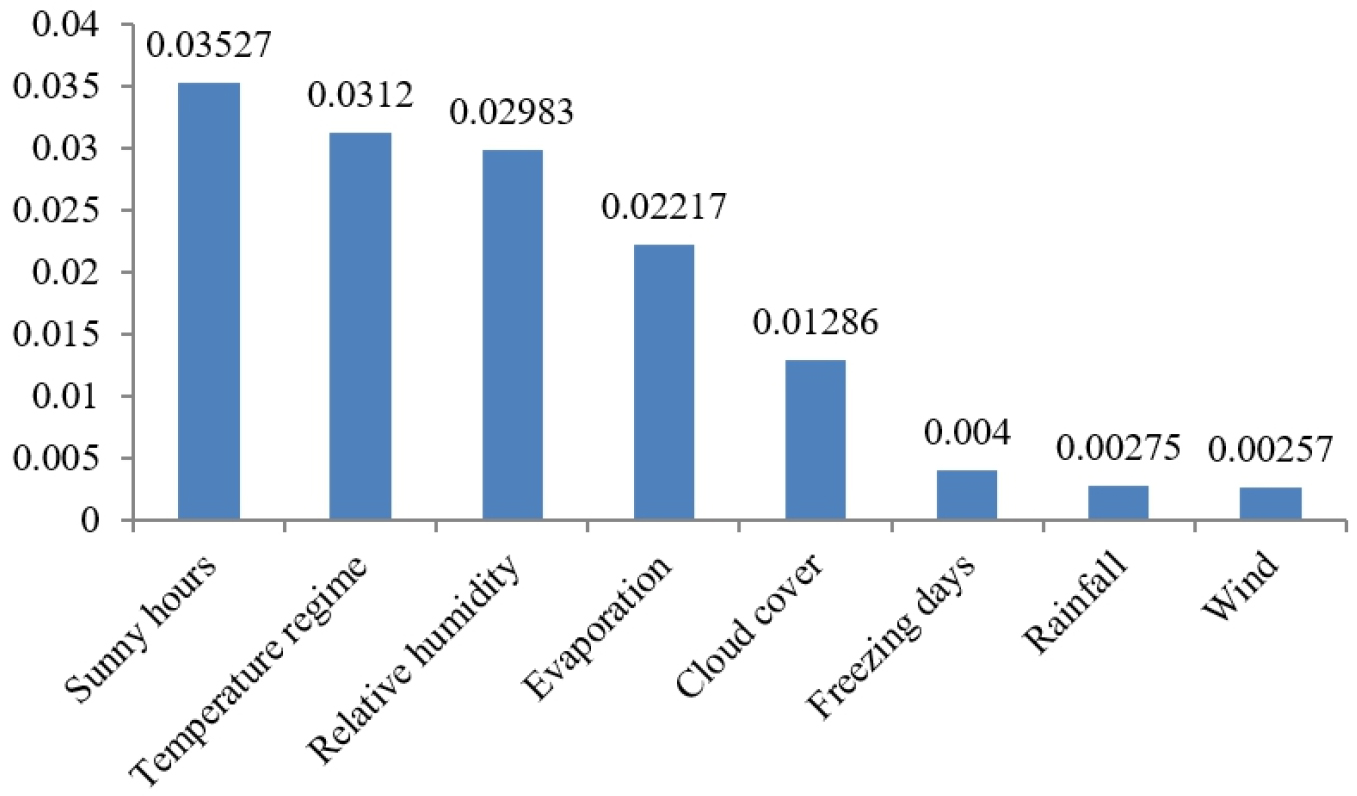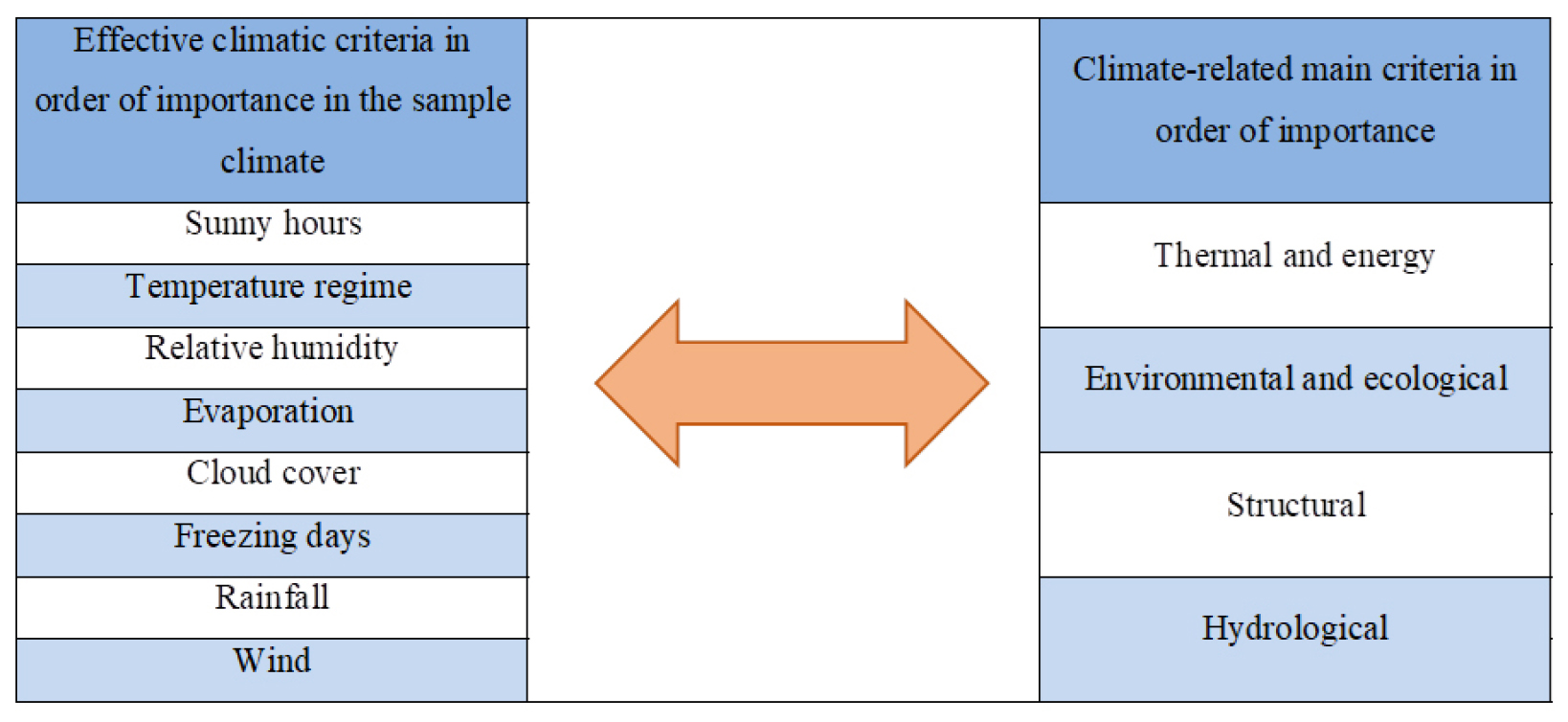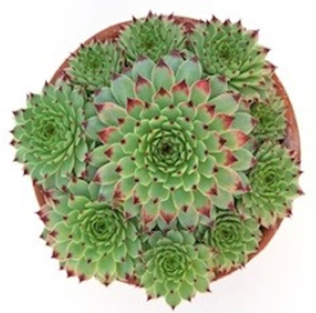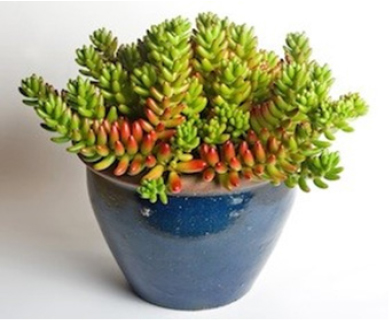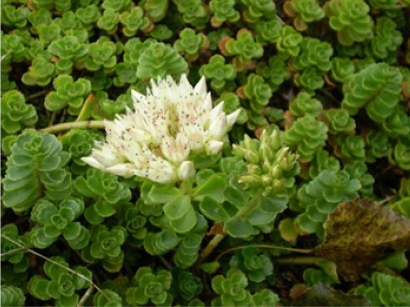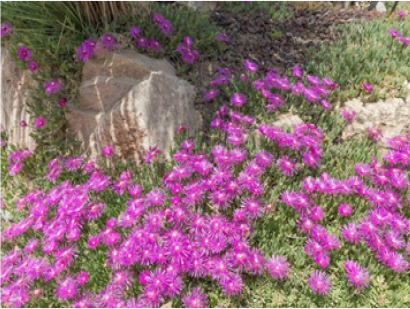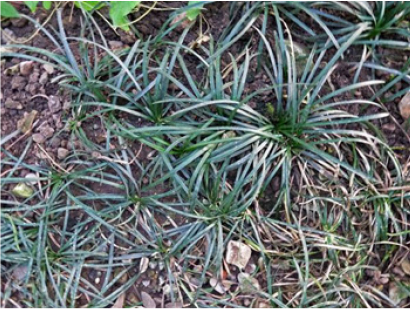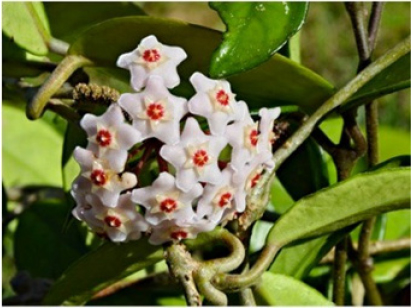Introduction
Literature Review
Methods
Questionnaire of criteria related to the selection of green roof vegetation
Climate criteria questionnaire
Reliability and Validity of questionnaires
Data analysis method
Climatic characteristics of the study area
Results
Effective criteria in selecting vegetation
Effective climatic criteria
Discussion
Criteria independent of climatic norms
Criterion-related to climatic norms
Plants suggestion
Conclusion
Future work
Introduction
Today, most people in the world live in cities and the desire to live in cities is increasing year by year. According to a recent United Nations report, urban populations are projected to increase by 67% by 2050 [1]. The increasing population of cities, development of urban spaces, uncontrolled urban density, and pressure on land availability for urban use [2] cause the loss of beautiful landscapes, reduction of the physical and mental health of citizens, the spread of environmental pollution, rising temperatures, the emergence of urban heat island, greenhouse gas emissions and reduced energy resources [3]. For example, research clearly shows that the world’s total energy consumption has increased dramatically over the past four decades. The International Energy Agency report clearly shows a 93% increase in global energy consumption from 1971 to 2014 [4]. Buildings, as the main components of cities, have a special and effective role in the emergence of these environmental problems. According to the United Nations Environment Program (UNEP), buildings account for about 40% of the world’s total energy consumption, emitting 36% of greenhouse gas emissions in Europe [3] and 33% of the world’s greenhouse gases [5, 6]. The increase of these concerns led to the birth of the concept of sustainable building as a building that has the least incompatibility and contradiction with the natural environment around it and in a wider area, with the region and the world. Sustainability is the major issue which construction industry is engaged with it [7] and construction practitioners worldwide are beginning to appreciate sustainability and acknowledge the advantages of building sustainable [8]. In order to satisfy sustainability objectives [9], to cope with climate change and reduce greenhouse gas emissions of buildings is to optimize building design and operation [10]. A building system is a set of procedures that select or identify the design and construction of a building or structure [11]. In the light of this concept, the more environmentally friendly the design of building components, the more saved energy and prevention of the destruction of the environment and natural resources [12]. The roof is one of the important components that play a role in creating a sustainable building and city [13].
The introduction of modern technologies has influenced a fundamental transformation in many aspects of the construction industry [14]. Roofs make up approximately 20-25% of the total area of urban areas [3]. Therefore, the greening of roofs has a high potential to affect the environment of buildings and cities. In this regard, green roofs are one of the most suitable sustainable solutions to solve problems related to urban heat islands [3] and while the physical expansion of cities has led to the destruction of the green nature of the environment, green roofs are trying to create and develop new green space in cities. More than 100 years have passed since the creation of green roofs and in recent decades they have become one of the main elements in urban areas around the world [15]. Among different countries, Germany has paid the most attention to green roof technology, so in 2008, about $ 77 million was invested in this field [16]. More than 10% of homes in the country have green roofs [17]. This amount of attention and support for the spread of green roofs is for the many benefits that a green roof can provide to the building and its surroundings. Management of surface water caused by rainfall [18], improving runoff quality [19] and urban air quality [20], reducing the effect of urban heat island [16] and energy consumption, improving energy efficiency and overall thermal performance, regulating indoor and outdoor temperatures [3] and increasing roof lifespan [21], and additionally, other secondary benefits such as the ability of green roofs to provide health and treatment to humans, reduce indoor noise, aesthetics [22] and increase diverse architectural interests and tastes [16], improve public perception of institutions and companies aestheticizing the environment, creating space for agricultural activities and increasing the value of assets, is an important part of the many benefits that green roofs offer as a key solution for sustainable urban development.
For example, previous studies have shown that by applying green roofs, heat flow through building roofs in the summer can be reduced by almost 80%. Green roofs consume about 2.2 to 16.7% less energy during the summer than traditional roofs. Depending on the regional and climatic conditions, a similar trend is observed for the winter season. The temperature difference between conventional and green roofs in winter is about 4 degrees Celsius, which is a significant amount [3]. These functional aspects can be optimized by choosing the right vegetation, but not much information is available on how to select design aspects based on regional conditions and the requirements of the desired performance [23]. The studies are limited to the specific conditions of the countries concerned and the climate of those regions, which may not be usable in other countries with different operational contexts and climatic conditions [24]. Due to the vastness or geographical distribution, they have different climates, which is much more serious and doubles the need to study different areas of the city that have different climates. Following these considerations, various studies and research have been conducted on climate consideration and the use of native plants in green roofs around the world [15]. The reasons for the emergence of this approach are the significant effects that the type of vegetation has on green roof productivity. Perhaps the most important challenge for the green roof to be as efficient as possible is the careful selection of the roof vegetation as its natural shell.
In this regard, the US Environmental Protection Agency [25] claimed that native plants have already adapted to local conditions; therefore, when used, they do not require irrigation, fertilizer, or pesticides, reducing maintenance costs [26] and can help restore ecosystems [25]. Also, according to Peck’s research, 45% of the award-winning green roofs use native plants [27]. Besides, 59% of the green roofs recorded in the Cantor book have used native plants [28], which shows the importance of paying attention to different climates and using native plants in green roofs. Previous research has also emphasized that the unsuccessful establishment of native plants affects the performance of green roofs negatively and the unsuccessful performance of green roofs will affect long-term public acceptance [29]. Given the diversity of climatic conditions in the vast country of Iran, there is a research gap to provide a logical mechanism for selecting suitable vegetation on green roofs, with an emphasis on sustainable development factors that have rarely been seen. The lack of a focused study on cold semi-arid climatic conditions such as Qazvin city is evident. Therefore, what has been considered in this study is the selection of suitable vegetation in the green roof design according to the climatic conditions of Qazvin, as a case study, in order to improve the efficiency of the building in terms of energy and cost, and to help the development of environmental and ecological factors of the city. This study focuses on the process of selecting suitable vegetation for green roofs and to a greater extent their productivity from the perspective of sustainable development; By reviewing different perspectives on how to choose the vegetation of the roof, a suitable model and mechanism for selecting the vegetation on the green roofs concerning sustainable urban development is achieved. Overall, the objectives of the present study are as follows:
1- Prioritization and analysis of different perspectives and necessary criteria for selecting green roof vegetation
2- Providing a sustainable mechanism for selecting green roof vegetation according to the intended climate
3- Investigating the relationship between the pillars of sustainable development and the principles of green roof design
Literature Review
The environmental impacts of buildings along with climate change need mitigation and adaptation strategies [30]. In this regard, factors such as resistance to drought and solar radiation, and the ability to cool the environment are considered to select suitable plants for green roofs [15]. Roof design goals determine the plant selection process. The process of selecting plants depends on the structure of the building, aesthetic values, climatic conditions, and growing environment conditions. Although aesthetic values and ecological aspects are decisive criteria, selected plants must first and foremost be viable. Vegetation survival must necessarily be less dependent on nutrients and must also be more adaptable to climate change. In extensive green roofs, durable vegetation that requires less care and is more resistant to drought is recommended, but for intensive green roofs, the choice of plants is unlimited [31]. In selecting plants for green roofs, especially in hot and dry climates, the freshness and succulence of the leaves are of particular importance. In fact, the survival rate of the plant is related to a certain degree of leaf freshness. Low-fresh species in arid climates require additional irrigation [32]. Based on the research of Caneva et al. [33], a methodological approach has been proposed to select wild plant species for extensive green roofs based on environmental characteristics. This extensive bibliographic search on plants led to the creation of an extensive database.
Regarding the effect of vegetation on the biodiversity of animal species, Madre et al. [34] for an example, while examining the biology of several species of arthropods on roofs with different plants, concluded that the more complex the vegetation, the more abundant species of living things grow on the roof. Of course, the environment and other local variables have had a small effect on the composition and frequency of these arthropods. In general, plant structures play a major role in the biological conditions of arthropods, and attention to this issue confirms the ability of green roofs to increase urban biodiversity [34].
The proper thermal performance of a green roof depends on the good condition of the materials. Jiménez’s research provides a guide including the stringent requirements of plants for green roofs [35]. Regarding the thermal performance of green roofs in summer, a two-sample study with minimum and maximum spectral reflectivity values shows that in these two roofs, the net radiation fluxes and the peak net radiant flux are different from each other by 20% and 16%, respectively. But, the heat flow of the substrate is the same in different green roofs [36]. Also, Monteiro et al. [37] examined whether some plants could show greater potential for substrate insulation and environmental cooling in summer than others. After experiments, it was found that non-succulent canopies, especially light-colored ones with high leaf area index and high leaf stomatal conductance have the highest cooling potential. As a result, succulent leaves are not a good choice in terms of cooling and insulation of the substrate [37]. In a study by Yaghoobian and Srebric, the quantitative effect of green roof vegetation on building energy consumption and energy balance components of the roof substrate has been investigated. The analysis process begins with the implementation of the green roof model to calculate the effects of vegetation with EnergyPlus software. Examining the samples with different plants and different climatic conditions, it was concluded that the surface temperature of the roofing layer decreases with increasing vegetation. In addition, the amount of solar radiation received on a green roof is reduced by 32%. Therefore, with a level of roof vegetation, the annual cooling load decreases, and the annual heating load increases [38].
The diversity of green roof plant species increases the multiple functioning of the ecosystem. Green roof plants are usually single-planting, but experiments have shown for the first time that ecosystems created by the mixing of several plant species provide better services [39]. The functional characteristics of the plant determine the services of the green roof ecosystem. According to the research of [40] six indicators of ecosystem services were predicted by plant characteristics so that by using the characteristics obtained from plants, species can be selected along with key services to optimize roof performance [40]. In addition, the type of vegetation on green roofs also affects the germination and initial survival of tree species. The growth potential of colonizing species depends on the surrounding vegetation. Some plants drive back the colonizing tree species by reducing ground contact [41]. Of course, the accumulation of green roof plants by soil microorganisms is also possible [42].
The research has been done so far on green roofs and in particular, their vegetation, mainly on the requirements of vegetation selection, the effects of different vegetation selection, analysis of different views on the type of plant selection, or analysis of different behaviors and practices resulting from vegetation. Table 1 demonstrates the most important of recent previous studies. Rarely has research been done that attempts to provide a rational mechanism for selecting appropriate vegetation on a green roof with an emphasis on sustainable development factors.
Table 1.
Recent research on green roof vegetation
| References | Year | Main Result |
| [43] | 2012 | The vigorousness and continuity of vegetation cover have a more significant effect on reducing the heat entering the building than the type of green roof vegetation. |
| [34] | 2013 | Green roofs have a great ability to increase the biodiversity in the city. |
| [35] | 2014 | Provides strict requirements for plants used in green roofs and also offers a list of resistant and stable plants. |
| [36] | 2014 | Bed heat flow is the same on different green roofs, but the radiation fluxes values vary by up to 20% due to their different spectral reflectivity values. |
| [41] | 2014 | The presence of some plants in the green roof vegetation drives back colonizing tree species and hinders their continued growth. |
| [15] | 2014 | Suggesting general factors for choosing suitable plants for green roofs |
| [42] | 2014 | Using the benefits of succulent tissue without fungi as well as arbuscular mycorrhizal fungi is possible through a careful selection of green roofing plants. |
| [44] | 2014 | Numerical evaluation of the relative importance of common components used in green roofing |
| [45] | 2014 | Species diversity may increase the resilience and performance of green roof systems in the long run. |
| [46] | 2014 | Substrate depth heterogeneity may allow the coexistence of species associated with different conditions for longer than homogeneous conditions. |
| [31] | 2015 | Offering suitable vegetation for extensive and intensive green roofs |
| [33] | 2015 | Proposing a methodological approach to plant species selection and creating an extensive database using a bibliographic search on Mediterranean plants. |
| [39] | 2015 | Ecosystems created by the mixing of several plant species provide better biological services |
| [38] | 2015 | The surface temperature of the bed and the amount of radiation received by the green roof decreases with increasing vegetation and accordingly the annual cooling load will decrease and the annual heating load will increase. |
| [32] | 2015 | The survival of plants is related to a certain degree of leaf succulence. Supplemental irrigation is required for non-succulent plants in extremely hot and dry conditions. |
| [40] | 2015 | Six indicators of ecosystem services were predicted by plant characteristics. As a result, using the characteristics obtained from plants, species can be easily selected to optimize the performance of green roofs. |
| [47] | 2015 | Providing some parameter values that can make a generic mechanism for predicting the runoff response to a time-series |
| [48] | 2015 | In order to improve functional biodiversity in extensive green roofs, succulent species are recommended along with annual and perennial herbs and geophytes. |
| [37] | 2017 | Suggesting the use of non-succulent canopies for proper cooling and insulation performance. |
| [49] | 2018 | Stormwater retention, recreational space provision, roof slope, and f accessibility type are the key criteria for decision-making. |
| [50] | 2018 | Comprehending how to make phylogenetic diversity serviceable for plant selection helps the effectiveness of design and ecosystem service delivery. |
| [51] | 2019 | Acrocarpus mosses are the best choice for green infrastructure in extreme climates with scarce water resources. |
| [52] | 2019 | The selection criteria between the normal roof and green roof are related to performance, thermal insulation properties, roof protection, and system weight. Academics’ point of view differs from professionals’ in the field of green roof costs. |
| [53] | 2020 | Sesuvium portulacastrum and Callisia plants are highly drought tolerant and should be considered for extensive green roof design in the tropics. |
Methods
The main purpose of this research is to select green roof vegetation according to the principles of sustainable urban development. An influential factor in this process is the climatic conditions prevailing in the environment in which the green roof will be implemented. In this research, the climatic conditions of a cold semi-arid region of Qazvin city, Iran, are considered. Figure 1 shows the general strategy and research path to achieve the result.
First, after studying the literature, the criteria influencing the choice of green roof vegetation and climatic criteria are taken into account. After determining the above criteria, each of them is categorized in their respective tables and subjected to the test of specialists and experts in order to be approved by experts and to be weighed in terms of importance and impact. Then, the mentioned criteria are analyzed and the research outputs are examined by considering the effect of both vegetation selection and climatic criteria so that suitable green roof plants in the studied climate are suggested.
This study has a limitation of the lack of experts in the field of green roofs in Iran. Because a part of the research - which will be described in full below - requires respondents, in addition to specializing in civil engineering, to be sufficiently familiar with the green roof workspace as well as climate issues. Therefore, in this study, the viewpoints of 16 experts from different fields (including contractors, consulting engineers, university professors, and Ph.D. students in civil engineering) have been used. In order to identify climatic criteria and the criteria influencing the choice of vegetation, from a pool of factors in previous studies, the Delphi method was used to reach a consensus on the main criteria. During the presentation of the determined criteria to the interviewees in the Delphi method, effective criteria were determined. Then, the following questionnaires are used to prioritize these criteria.
Questionnaire of criteria related to the selection of green roof vegetation
Based on previous studies and the opinion of experts by Delphi method, the main criteria in choosing green roof vegetation have been extracted as follows: 1- Economic criteria, 2- Thermal and energy criteria, 3- Structural criteria, 4- Environmental and ecological criteria, 5- Hydrological criteria, 6- Aesthetic criteria, and 7- Acoustic criteria. Each of the obtained criteria also includes a series of sub-criteria and more detailed characteristics as a subset that according to which it is possible to be more careful in selecting the appropriate vegetation for green roofs.
According to the Likert scale, the respondents evaluate the existing sub-criteria. It should be noted that according to the Likert scale, the five to one options are considered the degree of importance of very high (5), high (4), medium (3), low (2), and very low (1). By scoring each of the sub-criteria, the average score of all sub-criteria will achieve the main criteria score. This process is expected to increase its accuracy and prevent possible counting of high-deviation results. As a result, after completing the questionnaires in this section, the green roof vegetation selection criteria are approved along with their sub-criteria and are prepared for final weighting and prioritization in the next section.
In the next step, the AHP method is used to prioritize the general criteria. Thus, in comparison with criterion i with criterion j, if the importance of both criteria is the same, the number 1 is selected. If the criterion on the right side is more important, the numbers 2 to 9 on the right should be chosen as much as it is more important, and vice versa. For example, if the criterion on the right side is 3 degrees more important, the number 3 is selected from the right. Obviously, only one number (ie the number closest to the most important item) is marked in each row.
Climate criteria questionnaire
In studying climate study, a distinction must be made between climatic elements and criteria. Temperature, pressure, and radiation are each considered a climatic elements. The combinations of these elements, which represent a certain physical state of the atmosphere, such as heat, precipitation, or cloudiness of the sky are also considered climatic elements. In contrast, altitude, longitude, latitude, mountain direction, and vegetation that somehow affect the study space are considered climatic criteria. Here, climatic norms are examined, which contain a general conclusion from the available statistics of atmospheric elements, and questions are raised based on them. Based on previous studies, the climatic characteristics of Qazvin city, and the results of the Delphi method, climatic criteria were extracted as follows: 1-Relative humidity, 2- Cloud cover, 3- Wind blow, 4- Temperature regime, 5- Freezing days, 6- Rainfall, 7- Evaporation and 8- Sunny hours. These criteria are evaluated according to the Likert scale, and the respondents should give a score of 1 to 5 for each of the criteria based on the degree of importance they recognize. In the next step, to prioritize the climate criteria over each other, the AHP method is used, which is explained in the sub-section above. Finally, in this part, climatic criteria are confirmed, weighted, and prioritized.
Reliability and Validity of questionnaires
Validity means that the questions and content are related to the purpose of the questionnaire, which must be approved by experts. The validity of measurement tools is due to the fact that incorrect information resulting from incorrect measurements harms the value and accuracy of research and can invalidate it. In the present study, the validity of the questionnaire was examined and confirmed in all stages of the questionnaire design with the help of 5 experts and professors in this field.
Reliability means the extent to which measuring tools will produce the same results under the same conditions. Various methods are used to measure the reliability. In this study, Cronbach’s alpha coefficient is used in this research. Cronbach’s alpha coefficient varies from zero (no correlation) to +1 (full correlation), which is usually confirmed by questionnaires with a reliability coefficient greater than 0.75 [54]. Regarding the Likert questionnaire, which was used in this study, the reliability coefficient of about 0.85 was considered acceptable by researchers and indicates the high reliability of the questionnaire. Accordingly, using SPSS statistical software, Cronbach’s alpha coefficient was calculated separately for each questionnaire, which in all cases was more than 0.87. Overall, the questionnaires were of a good degree in terms of reliability and validity.
Data analysis method
The data obtained through the questionnaires consist of two parts. One is vegetation selection data and the other is climate data. Each of them is entered separately in SPSS statistical software and after analysis, the required outputs such as the average value of each criterion (or sub-criterion) are obtained. Meanwhile, the Kolmogorov- Smirnov test and similar methods can be used to measure the normality of the data, but the assumption that the data distribution is always normal is incorrect; because the normality of the data depends on the nature of the research. In the present study, according to the measured criteria and according to the available outputs, we mostly saw positive skewness of the data and their asymmetric distribution. Therefore, the mentioned tests were omitted. According to the average opinions of experts, the data are normalized. This normalized data was the required data from the first questionnaires that were obtained. On the other hand, there are AHP questionnaire data that prioritize the criteria. The average of experts’ opinions about these questionnaires is also calculated and the weight of each criterion (or sub-criterion) is calculated through the AHP process.
Finally, in each of the vegetation selection and climate criteria, by multiplying the weight of each criterion by the normalized number related to its importance, the final coefficient of that criterion is obtained, which is the basis of the analysis and conclusion of the research. In this way, by considering the final coefficients, and according to the studied climate, it is possible to decide on the type of suitable vegetation on the green roof. The issue that will be mentioned while presenting the data is describing the type of climate of the studied city (Qazvin), which is a key point in the discussion because part of the vegetation criteria in each climate has its own weight value.
Climatic characteristics of the study area
Qazvin province, with an area of about 158,200 km (approximately 0.01 of the total area of Iran), is divided into northern and southern parts in terms of topography. The northern part of the province is completely mountainous (because of the Alborz heights) and is completely different from the southern part, which is plain and hilly. The semi-arid and cold climate is the largest climatic zone of the central plain of Qazvin. The climatic characteristics of Qazvin city are presented in Table 2.
Table 2.
Summary of Qazvin climate characteristics [55]
Results
In this section, the results of reviewing the literature, questionnaires, and opinions of experts in two areas of vegetation selection criteria and climatic criteria are expressed.
Effective criteria in selecting vegetation
After a comprehensive literature review, a set of criteria affecting the selection of green roof vegetation was counted as tabulated in Table 3. Each of the criteria obtained included sub-criteria that explain the main criteria, and these sub-criteria make it possible to make more accurate decisions about the main criteria. All the main criteria along with their sub-sections were investigated by experts through the Delphi method for approval and correction. Finally, seven main criteria and 27 sub-criteria were obtained, the results of which are given in Table 2. Abbreviations were intended for ease of analysis only. 1- Economic criteria, 2- Thermal and energy criteria, 3- Structural criteria, 4- Environmental and ecological criteria, 5- Hydrological criteria, 6- Aesthetic criteria, and 7- Acoustic criteria
Then, the degree of importance of each of the sub-criteria in the Likert spectrum (with a maximum score of 5 and a minimum of 1) was calculated according to the experts’ opinions. Mean indices (the average of the comments) are shown in Figure 2. Obviously, the importance of all sub-criteria (on average) indicates the importance of the main criterion.
As can be seen in the results, criteria such as E2, H3, N1, B4, A2, represent the cost of accessibility, construction and implementation of vegetation, thermal insulation capacity and impact on energy consumption of the structure, treatment of municipal pollutants, quality enhancement and development of visual beauty, sound insulation capability for the structure, respectively., received higher scores; But the inevitable issue is the priority of each of the main criteria (both economic and structural, etc.) over each other. Therefore, to complete the discussion, it is necessary to use the AHP questionnaire answered by experts to obtain the weight of each of the 7 main criteria to finally see the true importance of each of the 27 sub-criteria.
Table 3.
Criteria affecting vegetation selection
All calculations so far have been made to clearly define and understand the importance of each sub-criteria, as components of vegetation selection on the green roof, in relation to each other. Therefore, it is necessary to affect the weight of each main criterion in the normalized average of comments for each sub-criterion to obtain the final coefficient of the importance of the sub-criteria. In order to understand the final coefficient of each sub-criterion (due to the high number of sub-criteria) and avoid the emergence of very small numbers, a simple mathematical operation was performed in the final calculations. According to the normalized data of the sub-criteria, the relative importance of each sub-criterion was calculated under its main criterion and then it was given to the weight of the criteria. All of the above are listed in Table 4 along with the final coefficients obtained.
Table 4.
Calculation of final coefficient of the importance of vegetation selection criteria
Economic and then thermal and energy criteria were of higher weight and importance. In Figure 3, the sub-criteria are shown in ascending-descending order based on the final coefficient of the importance calculated. Among the sub-criteria, all three economic ones, “cost of accessibility, construction and implementation of vegetation”, “maintenance costs during the life of the structure” and “ vegetation design cost “ have the highest final coefficient of importance, respectively.
Effective climatic criteria
The given climatic criteria were exposed to the opinion of experts in order to be first confirmed and corrected and then evaluated according to the Likert scale from 1 to 5 (meaning very low to very high). Table 5 shows the eight adjusted climatic criteria along with their abbreviation. Now, as the process described in the previous sub-section for the vegetation selection criteria questionnaire, Figure 4 illustrates the importance of climatic criteria relative to each other (in the climatic conditions of Qazvin). The scores obtained as an average of effective climatic parameters are, in fact, the importance of the parameters concerning the green roof vegetation in the studied climate. The high importance of the sunny hours (C8) and relative humidity (C1) criteria is evident.
Table 5.
effective climatic criteria for the choice of vegetation along with their abbreviation
| Climatic criterion | Abbreviation | Climatic criterion | Abbreviation |
| Relative humidity | C1 | Freezing days | C5 |
| Cloud cover | C2 | Rainfall | C6 |
| Wind | C3 | Evaporation | C7 |
| Temperature regime | C4 | Sunny hours | C8 |
The important point is that each of the climatic criteria is more or less important to each other. This means that, for example, criterion a may have higher climatic importance and priority than criterion b, regardless of the different effects they have on the green roof. Therefore, with the help of the AHP questionnaire, each of the obtained climatic criteria is prioritized and weighted so that by giving the effect of the weight of each criterion on their calculated importance, a correct inference from the effect of these criteria on the choice of roof vegetation is concluded. All of mentioned with the final coefficients of importance are listed in Table 6.
Table 6.
Calculating final coefficients of climatic criteria importance
According to Figure 5, the criteria of sunny hours, temperature regime, and relative humidity were the highest values, respectively, and other criteria were ranked next. Now, based on these coefficients, we can comment on the effect of each of the climatic criteria of green roof vegetation selection with a more logical view and have a correct analysis to select the appropriate plants.
Discussion
In order to achieve a certain type of vegetation, different criteria should be weighed together based on the importance of each. However, the interaction of the main criteria for vegetation selection and climatic criteria can be discussed in two parts. The first part is those main criteria that can be analyzed and examined in a one-sided way, regardless of climatic issues. But there are other main criteria that are affected by climate conditions. In this regard, vegetation selection criteria should be judged in accordance with climatic norms and the priority of each. In this section, each of the above cases is discussed.
Criteria independent of climatic norms
There are criteria among the vegetation selection criteria that in different climatic conditions, the decision about them is the same and is not related to climatic criteria. Of the seven main criteria, the economic, acoustic, and aesthetic ones have little to do with the climate characteristics (Figure 6). Economic criteria in terms of weight among all the main criteria have been the most important by experts. As a result, in any climate, the cost of access to the plant, its supply, and, in general, the implementation of vegetation on the green roof is one of the most important criteria. Maintenance costs during the life cycle of the structure and vegetation design costs are in the second and third place in relation to the total of 27 adopted criteria. Of course, according to the data obtained, the cost of construction and maintenance costs are very close in terms of importance, which is a natural thing and is consistent with many studies. Therefore, it is necessary to choose plants that are primarily economically viable; Of course, the type of roofing also has a significant impact on the cost of a green roof, which is not discussed here. But according to previous studies, although intensive green roofs are more expensive than extensive ones, in Cost_Benefit analysis, intensive ones are more economical in terms of environmental or building energy issues.
The second main criterion independent of climate is the aesthetic criterion. Its sub-criteria received lower scores according to experts. But this does not mean that the development of visual beauty is a trivial matter. Perhaps, if these criteria were ranked by the public (rather than experts in the field), aesthetic criteria would be ranked higher. Although more important criteria have overshadowed the aesthetic ones, the quality of plants in terms of having freshness color or formability should be considered when choosing vegetation.
The last criterion that is discussed in this sub-section is the criterion that has the lowest value in terms of weight among all the criteria. Acoustic issues are usually less considered in analyses due to the preference for other topics. Regarding these indicators, sound insulation capability and then ambient sound absorption are the most important sub-criteria. This is confirmed by previous research. The less pruned the plants, the more noise reduction they can do. Also, the position of the green roof alone will change the pattern of noise reduction. Another point to note is the high sound absorption coefficient of roof plants at higher frequencies. This means that the higher the frequency of ambient sound, the higher the absorption coefficient of roof plants. These requirements can help to select higher- quality plants for sustainable development.
Criterion-related to climatic norms
At the beginning of the discussion, it is necessary to look at the climatic criteria obtained and the relative importance of each, to examine the conditions of climatic norms in the studied area. Out of the 8 ranked criteria, sunny hours, temperature regime, and relative humidity with a short distance from each other are the first to third ranks of climatic criteria. They are followed by evaporation and cloud cover, and finally, the three criteria of freezing days, rainfall, and wind with close numbers to each other and with a significant distance from other criteria are included in the final rankings. A very important point is the difference in the discussion of this part in different climates. This means that several main criteria, including energy, environmental, structural, and hydrological criteria that are related to the climate of the region (Figure 7), in each of the different climatic conditions of the country have their own importance. Because the importance of climatic criteria affecting the choice of roof vegetation in different climates is different. Now, by calculating the prioritization of climate criteria in the Qazvin region, the main criteria of vegetation selection that have different degrees of importance can be discussed.
The first indicator that has a very high coefficient is the criteria related to the energy of the structure. Plants that have a positive effect on the energy consumption of the structure or have a high ability to cool the environment and reduce the thermal islands of the region are more valuable to choose as a roof covering. On the other hand, there are climatic criteria, such as sunny hours and the temperature regime, which have an undeniable connection with the thermal and energy criterion, which are themselves in the first and second ranks of important climatic criteria in Qazvin.
In addition to the type of plant selected and its thermal properties, soil depth, plant density, foliage density, growth environment, and plant irrigation are also important in the impact on the energy consumption of the structure. In order to model and measure the energy consumption of the structure according to the different types of green roofs, Energy Plus software is usually used. A roof with a green roof has a good potential to reduce the energy consumption of the structure compared to conventional roofs, and this criterion itself is effective in reducing the life cycle costs of the structure. Basically, for this reason, economic and energy criteria with coefficients of close importance are at the top of the selection criteria.
The second criterion related to climate is the environmental criterion. It may not have a specific response to some climatic norms, but each climate may have its own organisms depending on its ecosystem. On the other hand, for the process of treatment of municipal pollutants, which is the most important sub-criterion valued in this sector and is done by plants, criteria such as temperature or rainfall have their effects. It is natural that when a certain type of plant is used on the roof, a corresponding community of living things will be observed around the vegetation. Therefore, the structure of roofing plants is effective in the biodiversity of the surrounding animal species. As a result, due to the current climate and the fact that the temperature regime and sunny hours are important options in the process of air pollution and the diversity of environmental ecosystems, and since Qazvin is one of the industrial cities of the country, there is a need for plants that satisfy the environmental conditions of the city.
The third criterion based on the importance is the structural criteria of the plant. This part has various sub-criteria, the most important of which are resistance to solar radiation, maintenance capability, and drought resistance. In addition to them, resistance to diseases and pests, type of reaction to the duration of light radiation, the ability to reflect light, and Salinity resistance can also be mentioned. All of these sub-criteria are ranked slightly different from each other.
Some of the mentioned sub-criteria are directly related to climatic criteria. Thus, for example, due to the high importance of sunshine hours and on the other hand, the existence of different criteria for solar radiation or reaction to the duration of light or the ability to reflect light, the importance of these structural criteria will be doubled. In addition, due to the arid climate of Qazvin and the importance of temperature and humidity criteria, plant resistance to drought and its lower need for water is also important to us. Also, maintenance capability is a significant criterion that should be paid more attention to in the dry and mountainous areas of Qazvin. Therefore, we need plants that are in the desired climate, satisfy the above structural conditions, and have high durability. But the last criterion in this section is the hydrological criterion that relies primarily on urban flood management which is the first sub-criterion in this category. On the other hand, the rainfall criterion has a low rank among climatic criteria, and considering the annual rainfall of Qazvin, one can ignore this aspect of the plants. However, due to the climate of Qazvin, hydrological sub-criteria may be among the main criteria of plant selection, in terms of the importance of level with appearance and aesthetic criteria or even lower than them.
Plants suggestion
The challenges in choosing the type of green roof, and especially the type of vegetation, vary according to environmental conditions or even the goals of roof design. The employer may have a specific purpose for creating the roof and ignores the natural process of choosing vegetation. Now, without considering the above special conditions, based on the different expectations that exist from the presence of a green roof, a specific process is obtained to determine its plant species. According to the inference obtained from the research and climate data of Qazvin, several plant species suitable for the study area can be presented to complete and summarize the topics.
Considering the use of herbaceous plant species, bushes, or shrubs that can be used on green roofs, the plant proposal by the researcher is based on the assumption that the roof of the structure can withstand the load caused by the installation of any type of green roof. This is because some species may require more soil depth or a heavier bed. It should also be noted that, unlike intensive green roofs where the choice of plants is unlimited, wide green roofs require more durable plants with less maintenance. Beyond that, employers’ or designers’ attention to the roof plants can also be more effective in preparing suitable plants. Given the existence of these assumptions and based on the analysis of research findings, several plant species suitable for the Qazvin climate are suggested as an example in Table 7.
Table 7.
Proposed plants based on research results for the climate of Qazvin
Each of these plants is in a category or family that, due to similar characteristics, can usually be used by other plants of their family for use in green roofs. In addition, in introducing the above plants, an attempt has been made to suggest an example of different types of plant species that can be used, including ornamental, flowering, non-flowering, herbaceous, shrub, or woody plants.
Conclusion
Over the past two centuries, especially the last half-century, the increasing threat of human activity on the planet has increased the environmental concerns of global governance and societies’ emphasis on the pattern of sustainable development and the concept of sustainable cities. In recent years, green roofs are also expanding as one of the components of sustainable development of urban green space. One of the basic and influential issues in how the green roof is implemented is the type of vegetation used on it. Therefore, in this study, two questionnaires containing effective main criteria in selecting green roof vegetation and effective climatic criteria (with emphasis on the climate conditions of Qazvin, Iran as a case study of cold semi-arid climate), were distributed among experts and using the Delphi method, Likert score, and AHP, each criterion along with its related sub-criteria was prioritized and its importance was determined. The economic criterion that includes “vegetation design cost”, “cost of accessibility, construction, and implementation of vegetation” and “maintenance costs during the life of the structure” has the greatest impact and importance in choosing vegetation. The thermal and energy criterion is in the second place with a significant difference from other criteria. It includes sub-criteria of “ability to cool the environment”, “ability to balance the thermal performance of roofing layers” and “thermal insulation capacity and impact on the energy consumption of the structure”. Among the climatic criteria, sunny hours, temperature regime, and relative humidity are respectively more priority and important than others. Qazvin is a mountainous cold semi-arid city with low annual rainfall, so green roofs there need drought-resistant plants with less need for water and high maintenance capacity. Therefore, considering the ability of the roof of the structure to withstand the load of the green roof, plants such as Sempervivum, Sedum, Herbaceous, Carex Flacca, Delosperma Cooperi, etc. can be selected.
Future work
The mechanism presented in this study to achieve green roof vegetation is somewhat flexible. That is, according to different climates and different conditions, it is possible to select the appropriate plants with the desired regional conditions by using the process mentioned in the research. Having said that, suggestions are made to other researchers for future research:
•According to the mechanism embedded in this research, it is possible to further modify the criteria for selecting vegetation, and according to the climate of each region, the specific vegetation to that region is designed and provided in a catalog for builders and users in every city.
• Studying vegetation selection on the roof of high-rise buildings and its comparison with other types of buildings.
•Examining the desired criteria for vegetation selection from the perspective of different decision-makers.
•Developing a sustainable and resilient integrated framework for selecting green roof plants
•It is suggested that in order to present a new discussion in this area, a relationship or formula for achieving vegetation in any desired area according to the climate of that area should be examined.



